Who’s Who in Newspapers? Pamela Sparhawk edition…
March 22, 2024 by GuyHeilenman · Leave a Comment
The 7th installment of Who’s Who in Newspapers:
Thanks to Swann Auction Galleries, we discovered another fascinating but unheralded name which appeared in three 1817 issues of the Columbian Centinel (see a photo of the notice below). Swann staff provided the following background:
Pamela Sparhawk was born circa 1761 in Africa, was captured as a young girl and brought to Boston in slavery and was granted her freedom during the American Revolution. She had been separated from her brother by her original owner, but miraculously reconnected with him in Boston, where he owned property and was living under the name Samuel Bean. When Samuel died in 1816, Pamela petitioned the court to be recognized as his heir. Her petition ran three times in the Columbian Centinel newspaper, telling the story of her life: “Pamela Sparhawk of Boston . . . is a native of Africa, and was brought from thence to the West-Indies by a slave trader . . . and was a slave in the family of Rev. Mr. Merriam, of Newton, until the American Revolution. . . Samuel Bean acknowledged her to be his sister and was satisfied of the fact, but it would be difficult if not impossible for her in a court of law to establish her claim . . . in consequence of the unhappy circumstance, which will be easily perceived.” The notices were signed in type with her mark, a sideways capital “X.” The statement was witnessed by Congressman Timothy Fuller (father of the important feminist author Margaret Fuller), but it apparently went unheeded by the General Court.
Pamela Sparhawk’s life has recently been reconstructed and celebrated by the Historic Newton organization in an online exhibition, “Finding Pamela: Writing a New History,” and was described in the Boston Globe on 30 June 2021.
The link to the auction (which at the time of this post was still in the future) is:
SWANN Auction #2663 – The petition of formerly enslaved woman Pamela Sparhawk
Thankfully we had an issue with this coverage as well, but the greatest gain was the research which Swann’s offering inspired. In less than 15 minutes we were able to locate *background information on Pamela which we found qui te interesting.
If you’re curiosity has been piqued to the point where you decide to discover more about her through the following link, please note the additional related information shown below the heading: “Who was Pamela Sparhawk?” Enjoy.
FINDING PAMELA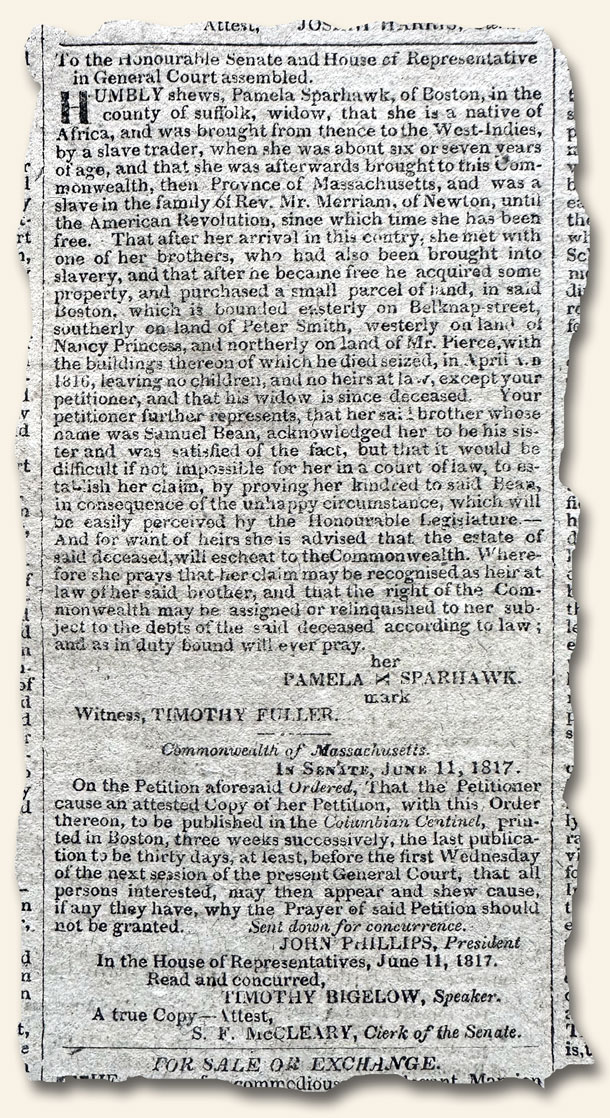
Harper’s Monthly & The Self-Made Man – Still Learning…
October 12, 2020 by Stephanie Williams · Leave a Comment
By natural inclination, I spend a fair amount of my spare time delving into the “women’s publications” within the Rare & Early Newspapers collection. Consequently, the title of the Editor’s Table of an 19th century issue of Harper’s New Monthly dragged me in, and in the spirit of fair play I decided to dissect and disseminate the contents, using the writer’s three questions.
Who is the Self-Made Man? In the author’s view, this is not the man who achieved much because of education, as education is an outside influence that detracts credit from the man. However, a self-made man can be educated. The one who is not educated, but rises to success in spite of the lack, is not necessarily self-made, as success does not equal the morality required in a self-made man.
What is the Self-Made Man? Again, this is not the one who commits good deeds, although a self-made man will be characterized by them. “The difference between the two characters is a moral one. It springs from the presence or absence of the humanitarian spirit. It is all the difference between the pure love of truth and the love of opinion.”
What is his true position for good or for evil among the powers of the age? Finally, all the negatives are set aside and the author clearly promotes a man who is driven to find truth — not in new discoveries or insights, but in the wisdom of the ages that has been tested by time, and continues to be trustworthy. Ultimately, the author highly esteems the members of the Protestant Reformation, and the things they accomplished. “It was an age where old truths were brought to light and re-established as old truths. It was a most serious age; it was a modest age; and in all these respects, especially in the latter, it differed widely from our own.”
The final condemnation of the modern era, male and female, is contained in the author’s closing remarks:
All the writings of every kind during that remarkable period, and, we may even say, the century that followed it, would not present so much of this frothy self-laudation, as may be heard in one Hope Chapel meeting of ‘strong-minded women’ and ‘self made’ men.
Early Jewish America through the eyes of historic newspapers…
December 9, 2019 by GuyHeilenman · Leave a Comment
 As those of us at Rare & Early Newspapers have been saying for over 4 decades, “History is never more fascinating than when it’s read from the day it was first reported.” Another collector whole-heartily agrees as he has used his collection of historic newspapers as the foundation for his latest book: “Strangers & Natives: A Newspaper Narrative of Early Jewish America 1734 -1869“. Amazon describes this latest release as follows:
As those of us at Rare & Early Newspapers have been saying for over 4 decades, “History is never more fascinating than when it’s read from the day it was first reported.” Another collector whole-heartily agrees as he has used his collection of historic newspapers as the foundation for his latest book: “Strangers & Natives: A Newspaper Narrative of Early Jewish America 1734 -1869“. Amazon describes this latest release as follows:
Strangers and Natives: A Newspaper Narrative of Early Jewish America, 1734 – 1869 focuses on the daily life and customs of the Jewish community and the Jewish people; the formation of Jewish congregations and organizations; and the involvement of Jews in education, literature, journalism, politics, the marketplace, the military, and history itself. While there are numerous historical accounts of early American Jewry quoting documents, diaries and memoirs, this is the first that uses periodicals from that time period. Using scans of the original newsprint, most from the author s own extensive collection, Strangers and Natives displays the actual written words – the first blush of history – in visual form.
The book can be purchased through Amazon through the link above. Thanks Ron.
Another author, among others, took on a similar newspaper-rooted effort which is also quite intriguing: “Reporting the Revolutionary War: Before It Was History, It Was News“
I’m New Here: Week Thirty-Three…
October 11, 2019 by Stephanie Williams · Leave a Comment
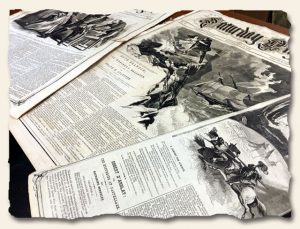 This week, while pulling issues that contain Emily Dickinson death notices, I read about the first public appearance of Dr. Oliver Wendell Holmes and also the institution of the Income Tax. As this was in 1886, I was surprised at the latter. Actually, I was surprised to see so many famous names and events in just a ten day span within that May. Oscar Wilde was hosting parties, Chicago was caught up in the Haymarket affair, and Coca-Cola was invented by a pharmacist. The rabbit trail I chose to follow (after investigating this whole Federal Income Tax thing that has historically been attributed to Woodrow Wilson’s presidency almost thirty years later) began with the following words to the Editor of the New York Times: “Mr. Putnam’s remarks on the impropriety of republishing [Washington] Irving’s works in their unrevised form, have but one fault; they are not strong enough.”
This week, while pulling issues that contain Emily Dickinson death notices, I read about the first public appearance of Dr. Oliver Wendell Holmes and also the institution of the Income Tax. As this was in 1886, I was surprised at the latter. Actually, I was surprised to see so many famous names and events in just a ten day span within that May. Oscar Wilde was hosting parties, Chicago was caught up in the Haymarket affair, and Coca-Cola was invented by a pharmacist. The rabbit trail I chose to follow (after investigating this whole Federal Income Tax thing that has historically been attributed to Woodrow Wilson’s presidency almost thirty years later) began with the following words to the Editor of the New York Times: “Mr. Putnam’s remarks on the impropriety of republishing [Washington] Irving’s works in their unrevised form, have but one fault; they are not strong enough.”
It is Autumn with a capital “A” in the northeast United States where, flanked by hilly vistas of multi-hued splendor, every street corner proclaims this the month of Hallowe’en. Washington Irving, author of the famous ghost story “The Legend of Sleepy Hollow”, could easily have been one of the serialized authors featured in the 1869 “Saturday Night” issues I have been pulling for a Philadelphia area collector. And October is definitely the time of year in which strange, extraordinary and macabre stories would have provided thrilling weekend entertainment to a 19th century culture blessedly devoid of electronic clamor.
I didn’t know about Irving’s first published work, or the misinformation campaign to hype interest prior to the release of A History of New York. I read about his “Knickerbocker” alter ego whose fictitious disappearance sparked a national following. This moniker influenced sports teams, architectural structures, social groups, and even a toy company. To this day, a resident of Manhattan is a Knickerbocker — nicknamed after a man who never was.
So, I am thankful for the censure that drew my attention away from the tax tables and the following words of “THE NEW INTERNAL REVENUE LAW. Topics of Interest to Everybody”:
Among these the Tax and Tariff laws are prominent, possessing an interest for every one, inasmuch as they most sensibly affect the cost of living, enhancing the prices of everything we eat, drink, or wear, adding to the value of articles of both necessity and luxury. The Tax law especially appeals directly to our pockets; and we find that a share of our profits from manufacturing any article, as well as a proportion of the income which we annually receive, is due to the Government.
I would much rather consider impropriety of a literary kind.
I’m New Here: Week Seventeen…
June 7, 2019 by Stephanie Williams · Leave a Comment
Despite the obvious gender bias inherent in the title, I like “The Gentleman’s Magazine“, as I suspect many non-gentlemen of the time did as well. This week I pulled an issue from April of 1775 – mainly because I enjoy the tone of superiority that saturates those months before what we now know of as the Revolutionary War (or whichever various title you prefer). “Colonial upstarts” were causing commotion and consternation to the rest of the world, but mainly to the ruling class in London. The heading of the very front page of the one perched on my desk amidst the new catalog excitement is entitled, “Continuation in the House of Lords on the Address to his Majesty respecting the Situation of Affairs in America”. What follows is a labyrinthine balance between appeasing the vanity of the monarch, and an attempt to elucidate the different aspects of potential vulnerability to defeat. In particular, the French and Spanish ships continuing to trade with the colonists brought great consternation. “Does the noble Earl pretend to interpret this explanation [England would be “…at liberty to seize any of their ships trading with American subjects”] generally, so as to authorize our taking their vessels at sea? If he does not, what can such a vague deluding promise avail? If he does, then I will venture to assure his Lordship, that he is miserably deceived; and that the first attempt to prevent French or Spanish ships from navigating the American seas will furnish them with an opportunity of asserting their maritime freedom, of making reprisals, and of justifying their conduct to the other great states of Europe, who are known to be long jealous of what they are pleased to call our despotic claim to the sovereignty of the ocean.”
The heading of the very front page of the one perched on my desk amidst the new catalog excitement is entitled, “Continuation in the House of Lords on the Address to his Majesty respecting the Situation of Affairs in America”. What follows is a labyrinthine balance between appeasing the vanity of the monarch, and an attempt to elucidate the different aspects of potential vulnerability to defeat. In particular, the French and Spanish ships continuing to trade with the colonists brought great consternation. “Does the noble Earl pretend to interpret this explanation [England would be “…at liberty to seize any of their ships trading with American subjects”] generally, so as to authorize our taking their vessels at sea? If he does not, what can such a vague deluding promise avail? If he does, then I will venture to assure his Lordship, that he is miserably deceived; and that the first attempt to prevent French or Spanish ships from navigating the American seas will furnish them with an opportunity of asserting their maritime freedom, of making reprisals, and of justifying their conduct to the other great states of Europe, who are known to be long jealous of what they are pleased to call our despotic claim to the sovereignty of the ocean.”
When I read this, I start to understand a little bit this American spirit, this classification under which our country has been perceived by the world, from the very earliest days. This mindset changed the world. And that is an immense, and not embarrassing, thought.
But, lest you think the GM’s are all politics, I would like to recommend any meteorology enthusiasts plug in the data compiled monthly and displayed on the inside cover page. The average prices of corn, wheat, rye, barley, oats and beans are delineated by county. Genealogists will enjoy the Births, Marriages, and Deaths alongside the list of Promotions and Bankrupts. There are book reviews and parish reports and a comprehensive section entitled “Historical Chronicle“, which gives an overview of multiple aspects of the state of the world.
Anyway, to delve into these accounts of the earliest days of this country is to see the tenacity that fueled an eventual nation – and perhaps nurture an admiration for what was once made, an inspiration for all that could be made again.
You can read more about Gentleman’s Magazines via previous posts at: Gentleman’s Magazines
Who’s Who in Newspapers? Karl Marx edition…
August 23, 2018 by GuyHeilenman · Leave a Comment
The 6th installment of Who’s Who in Newspapers:
George Washington, Benjamin Franklin, Alexander Hamilton… Babe Ruth, Jesse Owens, Vince Lombardi… John Wayne, James Dean, Katharine Hepburn – these individuals, among many, are easily recognizable. However, there are quite a few historical figures who, while having adorned the pages of many a newspaper, are far from household names, or, if they are, their connection with historic newspapers might be a bit of a surprise. Such is the case with Karl Marx. While his name is well-known, few are aware he was a foreign correspondent for the New York Tribune before his name became synonymous with socialism and communism.
Feel free to peruse the following chronological list of newspapers to explore his articles, and a few others which were written about him:
KARL MARX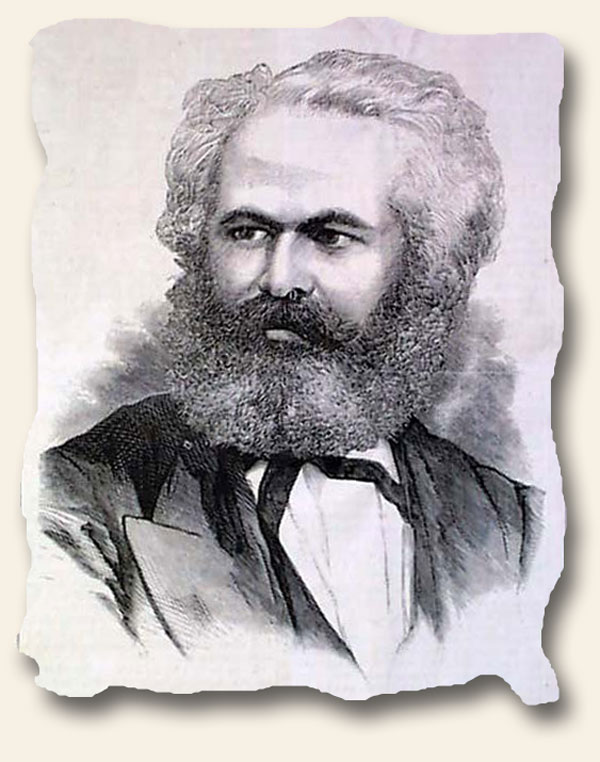
Who’s Who in Newspapers? Daniel Sickles edition…
April 26, 2018 by GuyHeilenman · Leave a Comment
The 5th installment of Who’s Who in Newspapers:
George Washington, Benjamin Franklin, Alexander Hamilton… Babe Ruth, Jesse Owens, Vince Lombardi… John Wayne, James Dean, Katharine Hepburn – these individuals, among many, are easily recognizable. However, there are quite a few historical figures who, while having adorned the pages of many a newspaper, are far from household names. Such is the case with Daniel Sickles. Who is he? What was he known for? When did he live?
Feel free to peruse the following chronological list of newspapers to discover why he received so much coverage in the newspapers of his day:
DANIEL SICKLES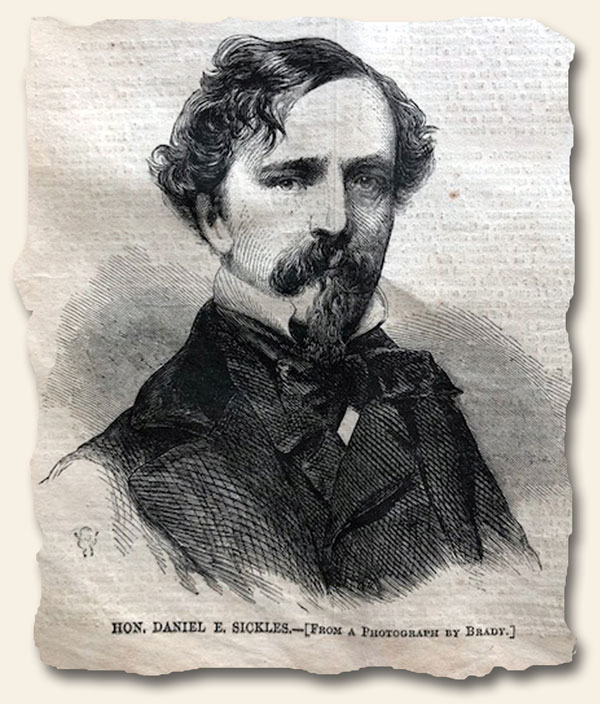
Snapshot 1969… Teddy Kennedy in hot water…
April 7, 2018 by GuyHeilenman · Leave a Comment
The following snapshot comes from the July 26, 1969 issue of the Springfield Republican, Springfield, Massachusetts…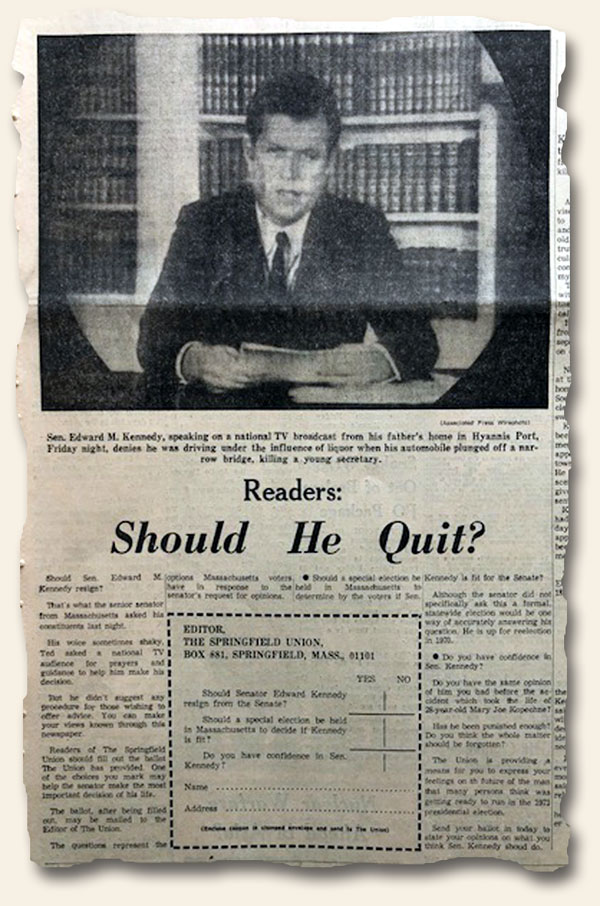
Snapshot 1969… Teddy Kennedy (was) in cold water…
April 4, 2018 by GuyHeilenman · Leave a Comment
The following snapshot comes from the July 20, 1969 issue of the Springfield Republican, Springfield, Massachusetts…
Snapshot 1817… Slavery…
March 30, 2018 by GuyHeilenman · Leave a Comment
The following snapshot comes from the February 20, 1817 issue of the National Intelligencer, Washington (D.C.)…


